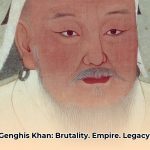Want a serious competitive edge in business? Stop relying on outdated strategies. This guide reveals how the ancient wisdom of Sun Tzu’s Art of War provides a powerful advantage in today’s competitive landscape. We’ll analyze Sun Tzu’s core strategies – from understanding your competition to choosing the right battles – and demonstrate how to apply them effectively in your business. Think of this as a strategic roadmap for success, filled with practical examples and actionable insights to help you outmaneuver your competition, make data-driven decisions, and establish a sustainable, thriving business. Learn to master the game and achieve lasting success. For more on impactful leadership strategies, see Lee Kuan Yew’s strategies.
Decoding Sun Tzu’s “The Art of War”: Strategies for the Modern Era
LSI Keywords: business strategy, competitive advantage, strategic thinking, Sun Tzu for business
Sun Tzu’s Art of War, penned centuries ago, transcends its origins as a military treatise, offering a surprisingly relevant framework for navigating the complexities of modern business. It serves as a timeless playbook for success, presenting strategies that empower you to outmaneuver competitors and attain your strategic objectives. Let’s delve into key principles and their practical application in day-to-day business strategies.
Mastering Your Battlefield: Market Research and Competitive Intelligence
LSI Keywords: market analysis, competitor analysis, SWOT analysis, competitive landscape, industry analysis
Sun Tzu emphasized the importance of knowing yourself and your enemy. In business, this translates into comprehensive market research and a deep understanding of your competitors. Before introducing a new product or entering a new market, it’s imperative to understand the competitive environment. This is akin to scouting the terrain before engaging in battle – you wouldn’t enter a fight unprepared, would you?
Step 1: Know Thyself (SWOT Analysis): Conduct a rigorous self-assessment. Identify your company’s strengths – what do you do exceptionally well? Pinpoint your weaknesses – areas needing improvement. Explore opportunities existing in the market that you can capitalize on. Recognize threats – from competitors or market trends – that could impede your progress. A well-defined SWOT analysis lays a solid foundation for your strategic initiatives.
Step 2: Analyze the Competition (Competitive Analysis): Identify your primary competitors. What are their strengths and weaknesses? What is their market share? What pricing strategies and marketing tactics do they employ? Understanding your competitors empowers you to anticipate their actions and identify potential vulnerabilities. Tools like the Porter’s Five Forces analysis can provide a broader industry perspective.
Step 3: Understand the Terrain (Market Research): Define your target customer. What are their specific needs and desires? What are their buying behaviors? Are there unmet needs or underserved segments within the market? Comprehensive market research facilitates the identification of opportunities and enables you to tailor your products or services to meet specific customer demands. Consider this creating a detailed map of the battlefield, highlighting potential advantages and pitfalls. Utilize surveys, focus groups, and data analytics to gather actionable insights.
Consider a startup launching a SaaS platform for project management. Through extensive market research, they identify a segment of small businesses underserved by existing solutions. They conduct a detailed competitor analysis, uncovering weaknesses in usability and customer support among leading platforms. Armed with this intelligence, they develop a user-friendly platform with exceptional customer service, positioning themselves for rapid growth within their niche.
The Art of Strategic Influence: Marketing, Innovation, and Customer Engagement
LSI Keywords: marketing strategy, product development, strategic marketing, customer engagement, brand building
Sun Tzu advocated for strategic influence rather than brute force. In business, this translates into strategic marketing, innovative product development, and genuine customer engagement. It’s not about deceiving customers; it’s about building strong relationships and creating lasting value.
Step 1: Build Anticipation (Strategic Communication): Generate excitement through strategic communication. Carefully planned reveals about upcoming products or services can create buzz and anticipation among potential customers. Consider exclusive previews, early access programs, and influencer collaborations to amplify your message.
Step 2: Differentiate Your Offerings (Smart Innovation): Don’t be predictable. Introduce innovative products or services that disrupt the market and capture attention. This could involve incorporating cutting-edge technology, addressing unmet customer needs, or offering a unique value proposition.
Step 3: Cultivate Trust (Ethical Considerations): Uphold transparency and integrity in all your marketing efforts. Never mislead customers; always be upfront about your products and services. Transparency builds trust and fosters long-term customer loyalty. Implement ethical guidelines and monitor your marketing campaigns to ensure compliance. Authenticity is key.
Luxury automaker Lexus has successfully used a strategy of “controlled leaks” and strategic communication to generate buzz around new vehicle models. By carefully releasing teasers and previews, they pique the curiosity of potential buyers and build anticipation for the official launch.
The Power of Agility: Adapting to Market Dynamics
LSI Keywords: business agility, market trends, responsive strategy, dynamic markets, change management
Markets are inherently dynamic, subject to constant shifts and changes. Sun Tzu emphasized the importance of adapting to evolving circumstances. In business, this means cultivating agility and responsiveness. Inflexible plans are prone to failure in volatile markets; adaptability is paramount to survival and success.
Step 1: Monitor the Environment (Stay Informed): Continuously monitor market trends, technological advancements, and competitor activities. This requires staying updated on industry news, subscribing to market analysis reports, and closely observing competitor actions. Tools like Google Alerts and social media monitoring can help you stay informed.
Step 2: Prepare for Contingencies (Plan for the Unexpected): Develop multiple scenarios and alternative strategies to address unforeseen challenges. This means having backup plans ready, anticipating potential disruptions, and possessing the capacity to pivot swiftly when necessary. Scenario planning and stress testing can help identify potential risks and develop mitigation strategies.
Step 3: Embrace Agile Methodologies (Embrace Agility): Adopt agile project management principles. Be prepared to adjust course based on new information and changing conditions. This empowers you to react rapidly to shifting market conditions and customer feedback, adapting your strategies accordingly. Implement sprint cycles, daily stand-up meetings, and retrospective reviews to enhance agility.
A fashion retailer experiences a sudden surge in demand for a specific product line due to a viral social media trend. Leveraging an agile approach, they quickly ramp up production, optimize their supply chain, and launch targeted marketing campaigns to capitalize on the trend. This adaptability enables them to seize a significant market opportunity and exceed sales expectations.
Strategic Resource Allocation: Choosing Your Battles Wisely
LSI Keywords: project prioritization, resource management, strategic allocation, ROI analysis, efficiency
Not every opportunity merits pursuit. Sun Tzu advised selecting your battles judiciously. In business, this translates into prioritizing projects and allocating resources strategically. Focus your energy and resources on high-impact initiatives that align with your overarching strategic objectives.
| Priority Level | Criteria | Example |
|---|---|---|
| High | Substantial market opportunity, minimal risk, high potential ROI | Launching a product line with validated market traction |
| Medium | Moderate market opportunity, manageable risk, moderate potential ROI | Expanding into a new geographic market with measured risk |
| Low | Limited market opportunity, elevated risk, low potential ROI | Investing in a speculative technology with uncertain market demand |
Diligent prioritization ensures you concentrate your efforts on projects most likely to generate substantial returns, optimizing resource utilization and minimizing wasted effort. Implement a scoring system to evaluate potential projects based on strategic alignment, market potential, and risk factors.
Ethical Considerations: Maintaining Integrity in Strategic Execution
LSI Keywords: ethical business, responsible strategy, ethical considerations, corporate social responsibility, compliance
While the Art of War provides valuable strategic insights, it’s imperative to apply these principles ethically and responsibly. In the modern business landscape, transparency, integrity, and corporate social responsibility are paramount. Build a sustainable business model that delivers value to all stakeholders, including customers, employees, and the community.
Sun Tzu’s Art of War delivers timeless wisdom applicable to modern business. It’s not about engaging in literal battles, but mastering strategic thinking, anticipating challenges, and adapting to evolving conditions. By knowing your market, your competition, and yourself, you increase your probability of success. The most effective strategy is often the one that circumvents unnecessary conflict and achieves victory strategically. Prioritize ethical conduct as a cornerstone of long-term success.
Ethical Application of Sun Tzu’s Art of War in the Modern Business Arena
LSI Keywords: ethical business, responsible strategy, ethical considerations, business ethics, corporate governance
Key Takeaways:
- Mastering strategic planning is essential for achieving sustainable success.
- A comprehensive understanding of your competitive landscape is fundamental.
- Agility and adaptability are critical in navigating dynamic market conditions.
Self-Awareness & Competitive Intelligence: The Cornerstones of Strategic Insight
LSI Keywords: self-assessment, competitor analysis, market dynamics, strategic insight, industry knowledge
Sun Tzu emphasized that self-awareness is foundational. Before launching any initiative, thoroughly understand your company’s strengths and weaknesses. What unique value do you deliver? Where are your vulnerabilities? This self-assessment is as crucial as researching your competition. Identify your primary rivals. What is their market share? What strategies and resources do they possess? This thorough understanding forms the bedrock for informed decision-making. Never underestimate the significance of “knowing thy enemy,” and more importantly, “knowing thyself.”
The Strategic Roadmap: Planning for Long-Term Success
LSI Keywords: long-term goals, resource allocation, obstacle anticipation, strategic roadmap, vision planning
Sun Tzu advocated for strategic planning over impulsive action. Avoid rushing into decisions; instead, create a detailed plan. Define your short-term and long-term goals. Identify the resources you’ll require. Anticipate potential obstacles. A well-defined strategy guides your actions, leading to improved outcomes. It’s about anticipating the moves of your competitors, not merely reacting to them. This proactive approach is essential to sustained success.
The Adaptive Enterprise: Navigating Market Fluctuations
LSI Keywords: flexible strategy, market trends, agile response, adaptive enterprise, resilience
Modern markets are characterized by constant change. A rigid approach inevitably leads to failure. Sun Tzu emphasized the importance of adaptability. Your plans should be flexible enough to adjust to unforeseen circumstances. Be prepared to pivot your strategy as needed, based on new information and market trends. This requires continuous monitoring of the competitive landscape and anticipation of potential disruptions.
Resource Optimization: Strategically Choosing Your Engagements
LSI Keywords: project selection, resource focus, high-impact initiatives, resource optimization, strategic investments
Not every opportunity is worth pursuing. Sun Tzu advised carefully selecting your battles. Prioritize projects based on their potential impact and alignment with your resources. Focus your energy on high-impact initiatives that align with your overarching strategy. Avoid spreading yourself too thin. Concentrate your resources where you can achieve the greatest impact.
Ethical Considerations in the Modern Business Landscape: The Ethical Use of Strategic Influence
LSI Keywords: ethical marketing, transparency, honest dealings, business ethics, integrity
Sun Tzu discussed strategic influence as a tool. However, how to ethically apply Sun Tzu’s art of war in modern business requires careful consideration. In today’s environment, transparency and integrity are paramount. Using strategic influence to mislead customers or competitors is unethical and potentially illegal. Instead, focus on strategic communication and controlling the narrative through open, honest dealings. Maintain ethical conduct while outmaneuvering competitors.
Team Dynamics: Building a Cohesive and Collaborative Force
LSI Keywords: team collaboration, open communication, skill set synergy, team dynamics, organizational culture
Sun Tzu understood the vital importance of a strong, cohesive team. Cultivate a collaborative environment where diverse skill sets complement each other. Ensure open communication within your team, allowing for the free flow of information and feedback. Without a united team, your strategy will inevitably falter.
Strategic Agility: Sun Tzu’s Principles for Decision-Making in Dynamic Markets
LSI Keywords: strategic decisions, market changes, agile management, business agility, adaptability
Key Takeaways:
- A profound understanding of your strengths and weaknesses, coupled with competitor analysis, is critical. Accurate self-assessment is paramount.
- Adaptability is non-negotiable; anticipate market shifts and react swiftly, mirroring the actions of a nimble warrior.
- Strategic planning must always precede tactical execution; avoid rushing into battles that you cannot win.
Comprehensive Analysis: Know Yourself, Know Your Market
LSI Keywords: SWOT, competitive advantage, market analysis, industry trends, strategic planning
Sun Tzu famously stressed the importance of understanding both yourself and your opponent. In business, this translates to comprehensive competitive analysis. Don’t limit your focus to direct rivals; consider indirect competitors and the broader market forces shaping your industry. What are their strengths? What are their weaknesses? How can you leverage this intelligence for strategic advantage? A well-executed SWOT analysis is your starting point, providing a detailed map of the battlefield.
Strategic Communication: Ethical Influence in the Marketplace
LSI Keywords: Ethical Marketing, Marketing Strategy, Strategic communication, brand positioning, public relations
Sun Tzu advocated for the skillful use of strategic influence. In today’s business world, this necessitates careful ethical consideration. Focus on crafting clever marketing campaigns—those that surprise and delight customers, rather than mislead or deceive them. You’re aiming for strategic communication. A well-designed campaign can subtly shift perceptions, creating an advantageous position. This is not about dishonesty; it’s about intelligent positioning and precise timing. Build trust through consistent messaging and transparent practices.
Adaptability: Navigating the Ever-Changing Business Landscape
LSI Keywords: Agile business, Market adaptability, strategy development, dynamic planning, responsive innovation
Markets are constantly evolving, demanding agility. Sun Tzu emphasized adaptability. Your business strategy must be agile, capable of pivoting quickly in response to market changes. Think of it as a flexible, responsive organism, rather than a rigid structure. Regularly reassess your strategic goals; be willing to adjust your plans as conditions warrant. Maintaining adaptability is pivotal for sustained success.
Strategic Prioritization: Choosing Your Key Initiatives
LSI Keywords: Strategic Priorities, Resource allocation, Project management, objective setting, efficiency
Not every opportunity is worth pursuing. Sometimes, strategic retreat demonstrates superior wisdom. Sun Tzu taught that you must select your battles carefully, prioritizing those that offer the highest probability of success and align with your overarching goals. Avoid unnecessary conflicts that deplete resources. Focus on those challenges offering the most significant return on investment. What are your core competencies? Concentrate your efforts there.
Actionable Steps for Business Leaders in Dynamic Markets
Based on Sun Tzu’s principles, here’s a set of actionable steps for effective strategic decision-making in Sun Tzu’s Art of War: Strategic Decision-Making in Dynamic Markets:
- Conduct a thorough competitive analysis. Identify your direct and indirect competitors. Analyze their strengths and weaknesses meticulously.
- Develop an agile strategy. Avoid rigid plans. Build in flexibility to adapt to market changes effectively.
- Prioritize your efforts strategically. Focus on opportunities that offer the most favorable returns and align with your long-term objectives.
- Cultivate creative and ethical marketing strategies. Employ strategic communication subtly, ensuring transparency and avoiding any form of deception.
- Continuously assess your performance and adapt your approach. Embrace learning and incorporate changes as you gain new insights and as market conditions evolve.
[This guidance empowers you to navigate the complexities of modern business, drawing strategic insights from a classic military text.]
Strategic Negotiation: Adapting Sun Tzu’s Principles for Modern Business Deals
LSI Keywords: business negotiations, strategic principles, negotiation tactics, deal making, conflict resolution
Key Takeaways:
- Thorough strategic planning is paramount before engaging in any negotiation. Comprehensive preparation, including understanding your counterpart, is critical for success.
- Strategic influence, while ethically complex, can be a valuable tool when used responsibly. Strategic information management is key.
- Adaptability is vital. Negotiations are dynamic; adjust your tactics as needed to achieve optimal outcomes.
Comprehensive Preparation: Knowing Your Counterpart and Yourself
LSI Keywords: market research, SWOT analysis, self-awareness, due diligence, intelligence gathering
Sun Tzu stressed the vital importance of understanding both your opponent and yourself. In business, this translates to thorough market research and a candid assessment of your strengths and weaknesses — a SWOT analysis. Before any negotiation, diligently research your counterpart’s position, resources, and likely objectives. Simultaneously, conduct a rigorous self-assessment, identifying your limitations and leverage points. This self-awareness prevents overreaching and helps you identify negotiation opportunities.
Influence Through Information: Strategic Communication in Negotiations
LSI Keywords: information control, strategic communications, trust building, persuasion, negotiation strategy
Adapting Sun Tzu’s Principles for Modern Business Negotiations requires a nuanced approach to influence. Sun Tzu advocated for strategic misdirection, emphasizing the control of information rather than outright deception. In business, this means carefully managing the flow of information. What you choose to reveal, and when, can significantly influence the negotiation’s outcome. However, adhere to strict ethical guidelines. Transparency fosters trust, which can be invaluable in the long term.
Tactical Flexibility: Adapting to Shifting Dynamics
LSI Keywords: flexible approach, tactical adjustment, shifting strategies, adaptability, contingency planning
Negotiations are rarely static, a fact Sun Tzu keenly understood. Unexpected issues arise, compromises become necessary, and opponent strategies shift. Remaining flexible is critical. Your initial plan should serve as your guide, not a rigid script. Be prepared to adjust your tactics depending on the unfolding situation. Avoid clinging to preconceived notions if the reality of the negotiation dictates otherwise.
Strategic Prioritization: Maximizing Returns in Negotiations
LSI Keywords: objective prioritization, resource allocation, strategic concessions, value creation, win-win outcomes
Sun Tzu emphasized the importance of choosing battles wisely. Not every negotiation point is worth fighting for. Some concessions might be strategically beneficial in the long run, enabling you to secure more significant wins elsewhere. Prioritize your objectives strategically and allocate your resources appropriately. Avoid spreading yourself too thin; concentrate your energy on what truly matters to achieving your strategic goals.
Knowing When to Disengage: The Strategic Value of Retreat
LSI Keywords: Disengagement strategy, resource preservation, self-control, walk-away point, BATNA (Best Alternative To a Negotiated Agreement)
Sometimes, the most strategic move is to disengage. If a negotiation becomes excessively costly or unproductive, gracefully withdrawing can be a powerful tactic. It preserves your resources and prevents a potentially damaging loss. Knowing when to walk away demonstrates self-control and strategic thinking, often prompting a more favorable approach from the other party in subsequent discussions. Clearly define your walk-away point before entering negotiations.















